Employee recognition defined
At its core, employee recognition is the act of acknowledging and appreciating employees for their performance and contributions to the company. It’s as easy as recognizing their hard work through a simple thank-you, a public shoutout, giving out performance bonuses, or a structured rewards program.
But it’s more than just saying “good job” – it’s about creating a culture of appreciation where employees feel valued, motivated, and connected to their work. Passing along authentic and meaningful recognition through a variety of channels can positively impact business outcomes. When done right, it boosts morale, enhances engagement, and drives long-term retention, ultimately contributing to a thriving workplace.
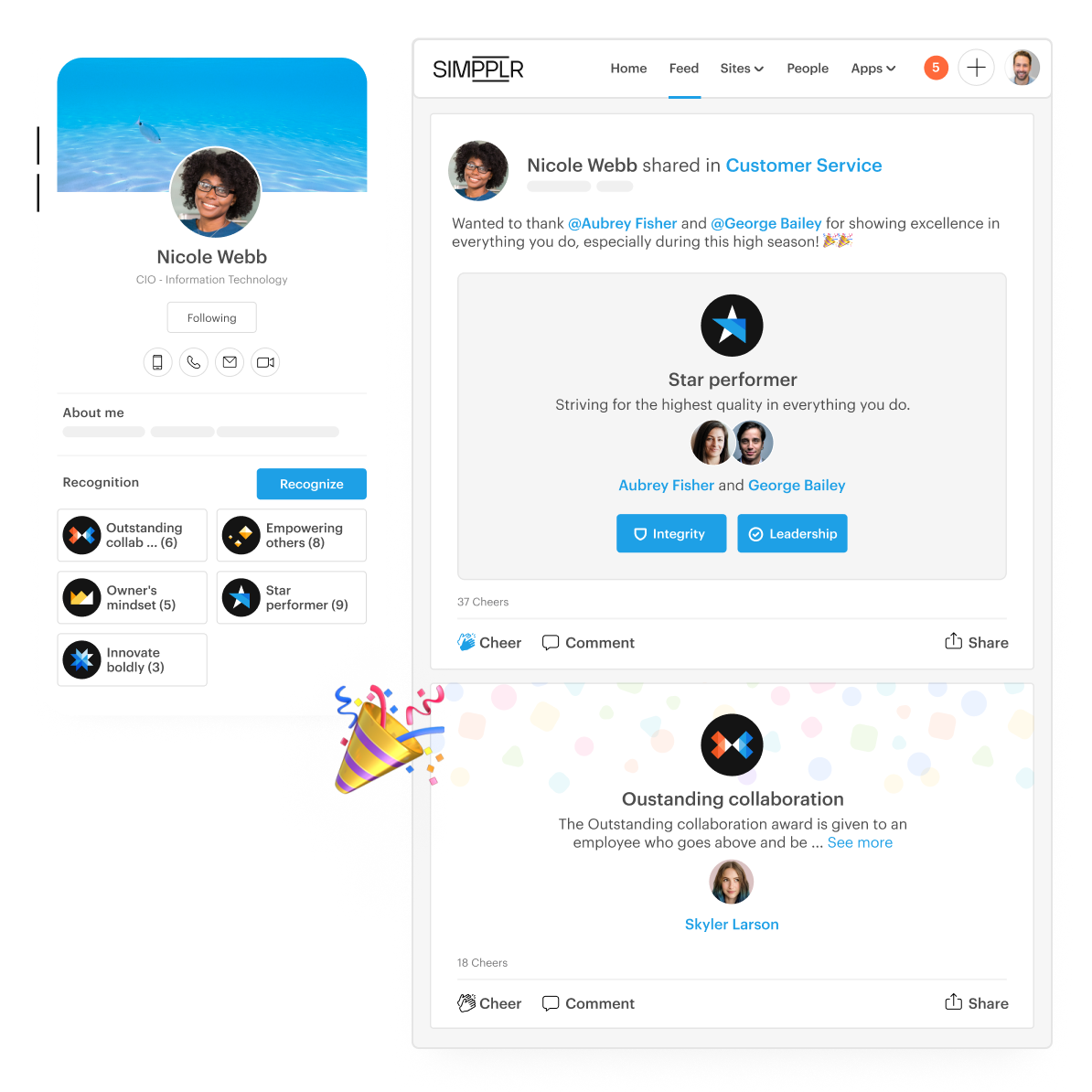
Is employee recognition the same as a monetary reward?
It is well understood that offering monetary benefits isn’t enough to attract and keep top talent.
Employee recognition vs employee reward
Direct monetary compensation — including salaries, bonuses, commissions, and profit-sharing — is a tangible reward for employees’ work. These financial incentives acknowledge effort and performance, but they don’t always create a lasting emotional connection between employees and their workplace.
True employee recognition lies in showing gratitude and acknowledging employees publicly for the work they do.
67% of employees rated praise and recommendation as the top motivators for performance, choosing them over performance bonuses and other financial incentives. (Select Software Reviews)
This underscores the emotional and psychological significance of recognition in the workplace.
In fact, Miriam Connaughton, Simpplr’s Chief People & Experience Officer, said,
“Recognition often carries more lasting impact than the rewards we associate with it. While we all love a gift card or a charitable donation, it’s the enduring glow of meaningful acknowledgment that truly matters.”
While monetary rewards fulfill financial needs, appreciation fuels motivation, engagement, and job satisfaction. A balanced approach — combining financial incentives with authentic recognition — creates a culture where employees feel seen, heard, and connected.

Importance of employee recognition
Employee recognition plays a crucial role in strengthening employee engagement and productivity. In fact, Gallup found that when larger businesses double their employee recognition efforts, they experience a 9% increase in productivity. Failure to recognize, show appreciation for, and celebrate the success of team members can lead to a dip in employee engagement and increased burnout. Additionally, Select Software Reviews reported that 66% of employees said they would quit if they didn’t feel appreciated and recognized.
Recognition and rewards can boost morale and create a positive atmosphere that motivates employees to do their best work.
A large Gallup study found that an average of one in four employees received praise or recognition in the past week, and if that number were doubled, organizations could see significant bottom-line outcomes like:
- 9% increase in productivity levels
- 22% decrease in safety incidents
- 22% decrease in absenteeism
Despite its importance, only 34% of employees report that their employer has a recognition program and a mere 13% rate these programs as excellent. This disconnect between intention and execution is causing a substantial impact on engagement, communication, retention and productivity.
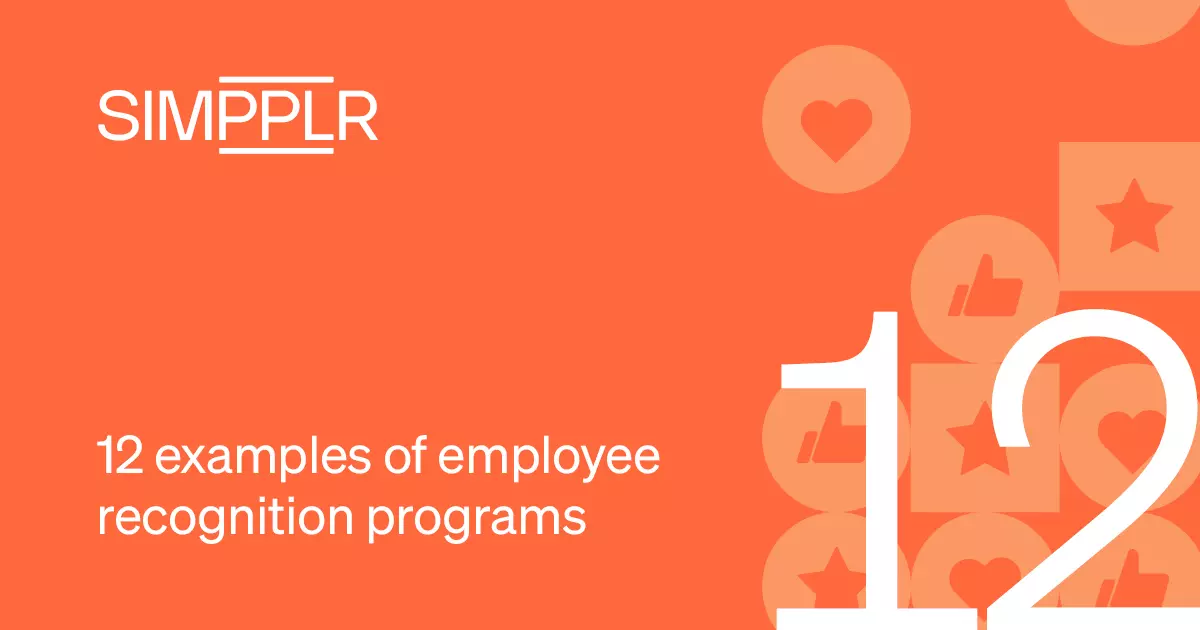
Types of employee recognition
Recognition and rewards vary from organization to organization, and how you appreciate employees will depend on your unique company needs.
Formal recognition programs
Traditionally, people managers have been the ones to dole out recognition to subordinates. This is known as formal recognition, in which managers and other supervisors single out high-performing employees for praise and feedback. Many formal recognition programs can be implemented, such as annual awards, employee of the month, or performance bonuses.
Informal recognition methods
Informal recognition happens more spontaneously and can be as simple as a personal note of thanks or a shout-out during a team meeting. These can come from managers or peers. While these may seem much less consequential than formal employee recognition programs, these gestures, although small, can have a big impact on an employee’s journey.
Peer-to-peer recognition
Recognition matters in every direction, but there’s a special place for peer-to-peer recognition. When employees appreciate each other’s efforts, it builds a strong organizational culture, strengthens teamwork and boosts morale. By making shoutouts visible on a shared platform like an intranet, organizations ensure that employees feel valued consistently and in more meaningful ways.
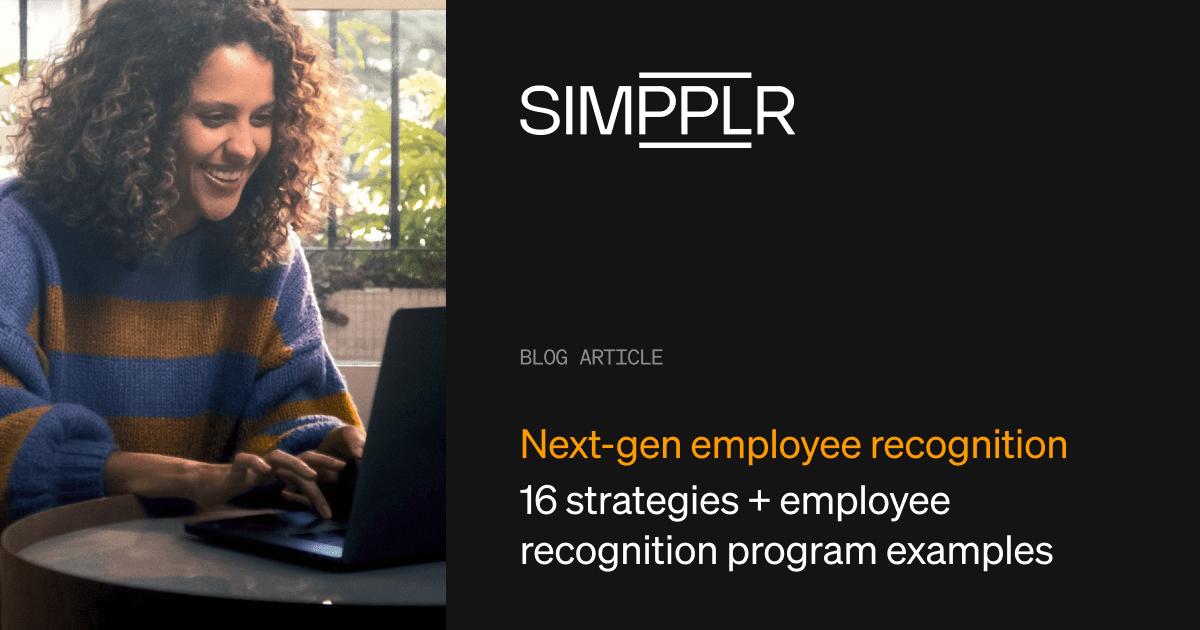
Related: Agero scales employee recognition with Simpplr
Benefits of employee recognition programs
When employees feel valued, they stay longer, work harder, and contribute positively to the company’s growth. This clear connection between recognition and business performance highlights the importance of robust recognition programs. Here are a few benefits to consider:
Improves employee retention
Recognized employees tend to stay with their organizations longer. Companies with strong recognition programs see lower employee turnover rates, as it builds loyalty and makes employees feel valued. For instance, 74% of employees who only receive recognition a few times in a year plan to quit within a year. However, with higher recognition, employee turnover can be reduced by 31%.
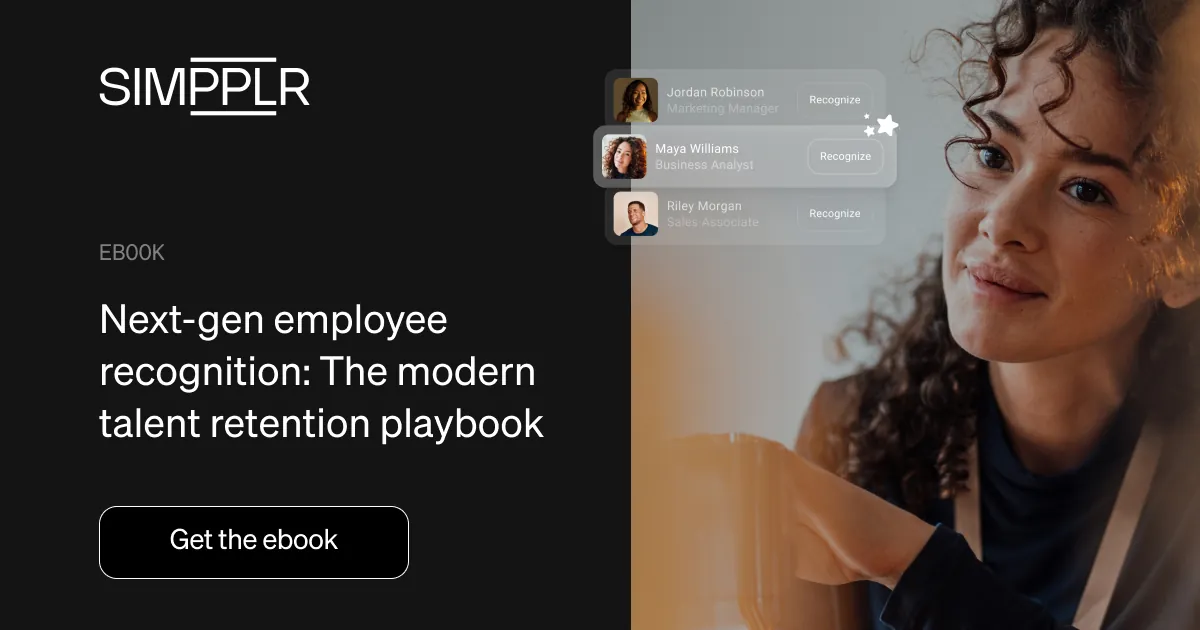
Enhanced productivity and performance
Recognition programs boost productivity by motivating employees to perform at their best. A study by Deloitte found that companies with robust recognition programs report a 14% increase in employee engagement, productivity and performance.
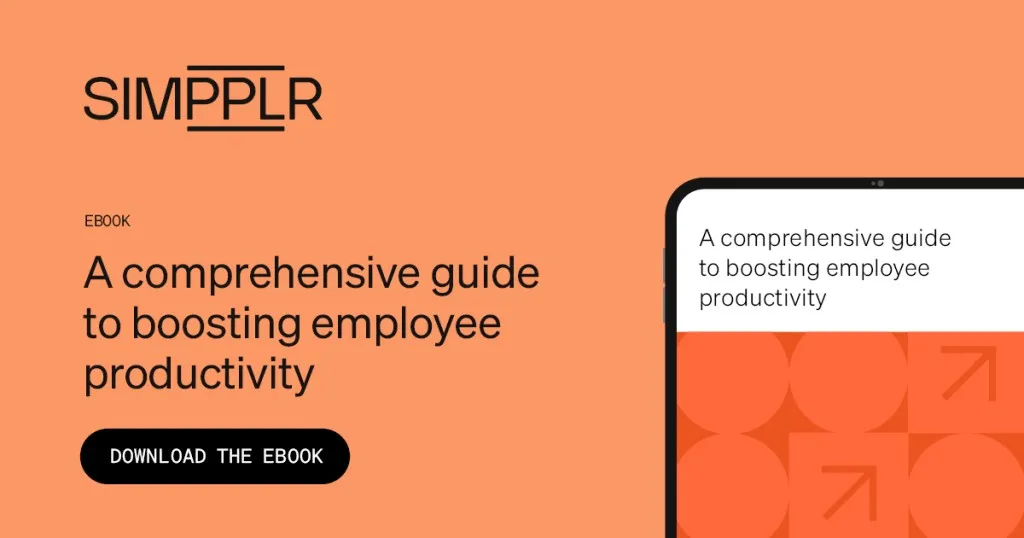
Increased revenue growth
Engaged employees who feel recognized perform 20% better and are 87% less likely to leave, driving higher profits due to improved performance and reduced turnover.
Preserves ‘tribal knowledge’
Recognizing and valuing employees encourages knowledge sharing and documentation, ensuring that essential institutional knowledge doesn’t walk out the door. Without proper recognition and engagement programs, organizations risk losing up to 42% of the specialized knowledge required for a role when an employee leaves.
Turns employees into brand ambassadors
If a person is passionate and enthusiastic about what they do and the company they work for, what better advocate for a brand could there be?
When employees feel valued and connected to their workplace culture, they naturally become enthusiastic brand ambassadors. In fact, research conducted by Great Place To Work® has shown that when employees are proud to work for a company, they are:
- Six times more likely to recommend their workplace to their friends and family
- Two times more likely to want to stay with the company for a long time
But how effectively are you recognizing your people? Take our 5-minute employee appreciation assessment to gauge your recognition efforts and uncover areas for improvement.

Four strategies to make employee recognition program impactful and successful
Here are the four best practices to ensure your recognition program makes a long-term impact:
Timely recognition: Celebrate in the moment
Recognition is most effective when it happens right away. When you acknowledge someone’s contributions as soon as they happen, it makes them feel valued and appreciated in that moment. This instantly reinforces good behaviors and boosts motivation.

Amplify values through rewards
Recognition is powerful, but when paired with meaningful rewards, it reinforces the behaviors and values that drive your company forward. Thoughtfully designed reward programs go beyond generic incentives — they align with your company’s culture, inspiring employees to embody key values in their daily work.

Personalization: Know what motivates each individual
Today’s workforce wants acknowledgement for their unique contributions to align with their personal preferences and professional goals. For instance, some employees might appreciate public recognition on social media or in company-wide emails, while others might value a handwritten note. Understanding what motivates each individual or generational cohort is crucial for effectively customizing your recognition programs.

Track and measure: Implement effective recognition systems
Tracking and managing recognition can be a real challenge, especially for enterprise organizations with thousands of people. To make recognition truly effective, track and measure with robust analytics. Leaders should be able to see how often employees are being recognized and who’s engaging the most. Managers should have insights into individual recognition trends to ensure everyone gets the appreciation they deserve.
Tip: Use Simpplr’s built-in reporting feature, which integrates recognition into performance reviews, ensuring employee achievements are consistently highlighted throughout the year.
Create a culture of employee recognition and reward with an AI-powered intranet
Recognition is a core part of your organization’s culture. In fact, 78% of employees cite recognition at work as “extremely important” for them to stay with the company. However, many organizations still struggle to make recognition a seamless, consistent, and meaningful part of daily work life.
Traditional methods often fall short — relying on manual processes, infrequent acknowledgments, or one-size-fits-all programs that fail to resonate with employees. To build a thriving workplace culture, organizations need a smarter, more integrated approach to recognition.
This is where Simpplr, an AI-powered intranet platform integrated with recognition and rewards, comes in.
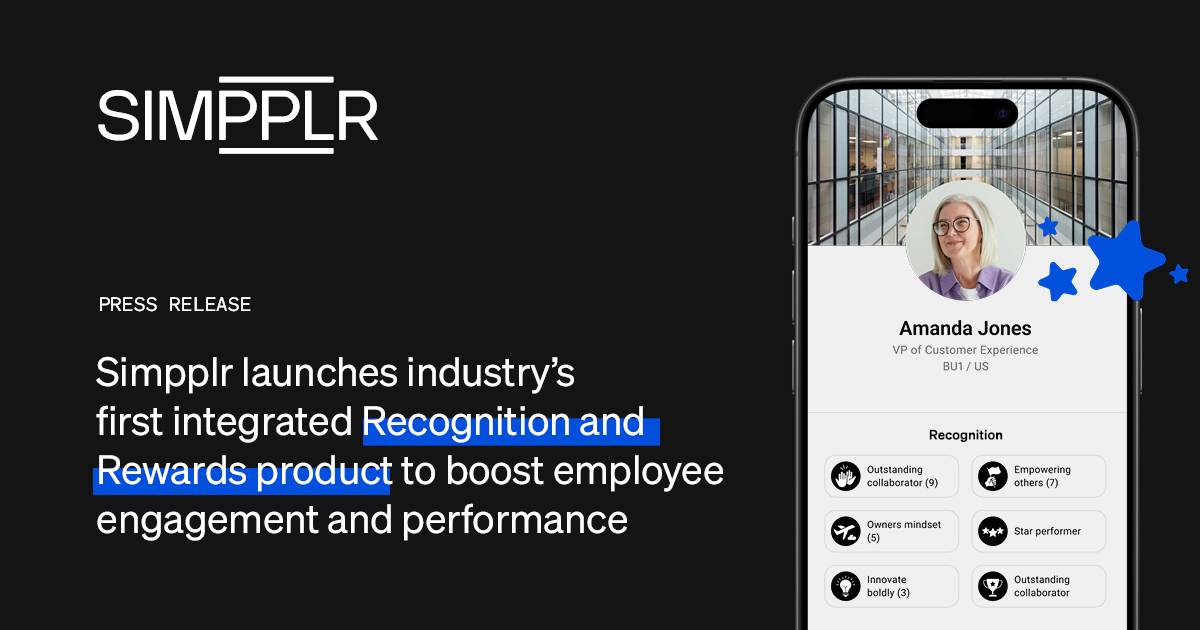
Simpplr’s Recognition and Reward platform seamlessly integrates within one digital work hub to maximize participation and align incentives. Program administration and reward redemption are effortless thanks to a user-friendly, multichannel experience. And Simpplr’s purpose-built AI uncovers deep insights and generates actionable recommendations, optimizing the efficacy and impact of your rewards and recognition program.
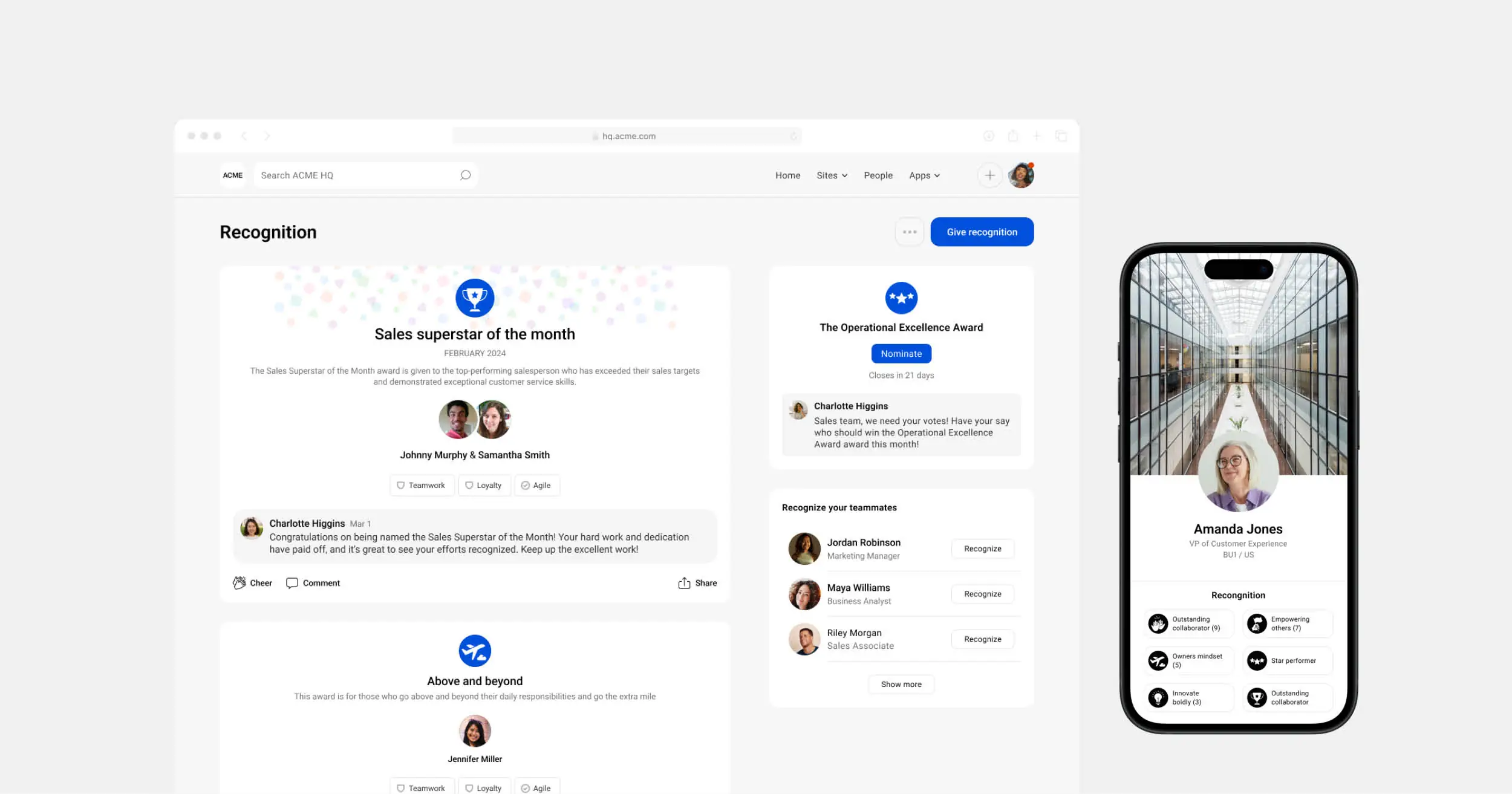
Here are the platform-wide AI capabilities powering every aspect of the employee experience:
- Peer-to-peer recognition: Cultivate a culture of appreciation with awards that highlight core values, enhancing visibility and community engagement.
- Spot awards: Instantly reward and recognize stellar performance with customized badges.
- Service awards: Automatically reward work anniversaries and milestones with personalized, memorable recognitions that highlight the individual’s journey and valued contributions within the organization.
- Rewards store: Offer various redemption options in a comprehensive portal, enabling employees to choose rewards that truly resonate with them.
- Multichannel: Engage and reward through preferred channels such as Slack, Teams, email, web, mobile and more, ensuring seamless integration into their daily workflow.
- Personalization: Enhance the impact of every recognition with personalized messages and awards, fostering a more meaningful and personal connection.
- Social amplification: Employees can comment and cheer on recognitions directly from their usual news feeds, promoting engagement in celebrating collective achievements.
- Budget management: Easily allocate and control the budget for recognition programs, ensuring sustainable and effective acknowledgment.
- Manager dashboard: Empower managers with insightful analytics and tools to promote and track recognition, enhancing leadership impact.
Get a live demo to understand how Simpplr’s recognition and reward digital tool can build a culture of employee appreciation in your organization.
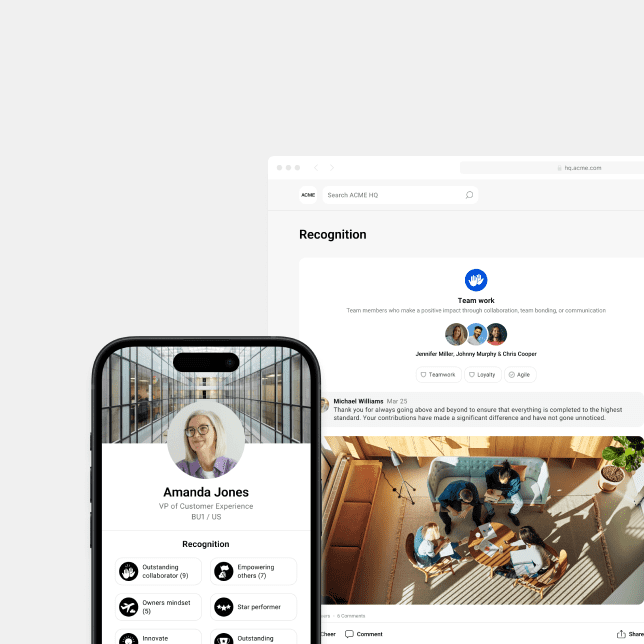
Watch a 2-minute demo
Integrate employee recognition and rewards within your intranet, maximizing participation and aligning incentives.
- Empower employees to celebrate each other’s wins
- Offer a variety of redemption options with a rewards store







